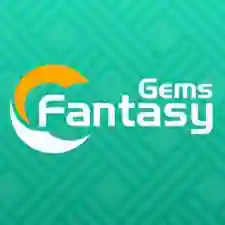Introduction
Game development is a fascinating combination of art, logic, storytelling, and technology. Whether you're creating a simple 2D arcade game or a full-fledged 3D adventure, understanding the core components of game development is essential. This guide will walk you through every aspect of building a complete game, including design, graphics, characters, coding, interface, and server-side setup. By the end, you’ll have a solid understanding of how games are created from the ground up.
1. Game Design
Game design is the blueprint of your game. It includes the concept, genre, mechanics, rules, objectives, challenges, and user flow. A well-thought-out design answers questions like: What is the game about? What makes it fun? How does the player win or lose?
- Game Genre: Action, Adventure, Puzzle, RPG, Strategy, etc.
- Story and Plot: Narrative that keeps players engaged.
- Level Design: Structure of levels or stages to balance difficulty and progression.
- Game Mechanics: Player abilities, movement, inventory, power-ups, etc.
Design documentation helps your team stay aligned and guides development choices.
2. Graphics and Visuals
Graphics are crucial for immersion and appeal. Depending on your game type, you might use 2D sprites or 3D models.
- 2D Tools: Adobe Photoshop, Illustrator, Aseprite
- 3D Tools: Blender, Maya, 3ds Max
- Animation: Spine for 2D, Unity or Unreal for 3D rigging and animation
Art styles vary: pixel art, vector, realistic, cel-shading, and more. A consistent and polished visual style enhances user experience.
3. Characters and Assets
Characters are the player's avatar or interactable units. Design includes appearance, backstory, behavior, and abilities.
- Main Characters: Protagonists the player controls.
- NPCs: Non-playable characters with roles or missions.
- Enemies: Challenge elements with AI behavior.
Assets also include sound effects, background music, and UI elements like buttons and icons. Using asset libraries like Kenney or OpenGameArt can save time.
4. Programming Languages and Tools
The backbone of any game is code. It controls gameplay mechanics, physics, animations, and player interaction.
- HTML/CSS/JavaScript: Perfect for web games, especially with Canvas or WebGL.
- C#: Used in Unity, good for both 2D and 3D games.
- C++: Powerful language for high-performance games, used in Unreal Engine.
- Python: Great for beginners or AI-heavy games (e.g., using Pygame).
Game Engines:
- Unity: User-friendly, supports both 2D and 3D, uses C#.
- Unreal Engine: High-quality 3D, uses C++ and Blueprints.
- Godot: Open-source engine with GDScript (Python-like syntax).
- Phaser: JavaScript framework for 2D web games.
5. User Interface (UI)
The UI is how players interact with your game: menus, buttons, HUDs (health, score), inventory systems, etc. A good UI should be intuitive and accessible.
- Main Menu: Start, Load, Settings, Exit
- In-Game HUD: Score, Health, Time, Minimap
- Responsive Design: Should work on different screen sizes
Use UI/UX tools like Figma or Adobe XD for prototyping. In web games, HTML/CSS and JavaScript handle interface elements.
6. Server and Backend
If your game is online or multiplayer, you need a backend to handle user data, leaderboards, matchmaking, and more.
- Server-side Languages: Node.js (JavaScript), Python (Flask/Django), PHP
- Real-time Communication: WebSockets or Socket.IO for live multiplayer
- Databases: MongoDB (NoSQL), MySQL/PostgreSQL (SQL)
- Authentication: Firebase Auth, JWT, OAuth
Hosting options include Heroku, Render, Vercel, DigitalOcean, and AWS. Firebase is great for real-time games with cloud functions and database support.
Conclusion
Game development is a multidisciplinary field that combines creativity with technical skills. From designing characters and levels to writing code and deploying servers, building a game is a rewarding challenge. Start small, build prototypes, test often, and keep learning. Whether you choose to create a web game using HTML5 and JavaScript or a full 3D game with Unity or Unreal, the tools and knowledge are within your reach.
Happy coding and game making!
